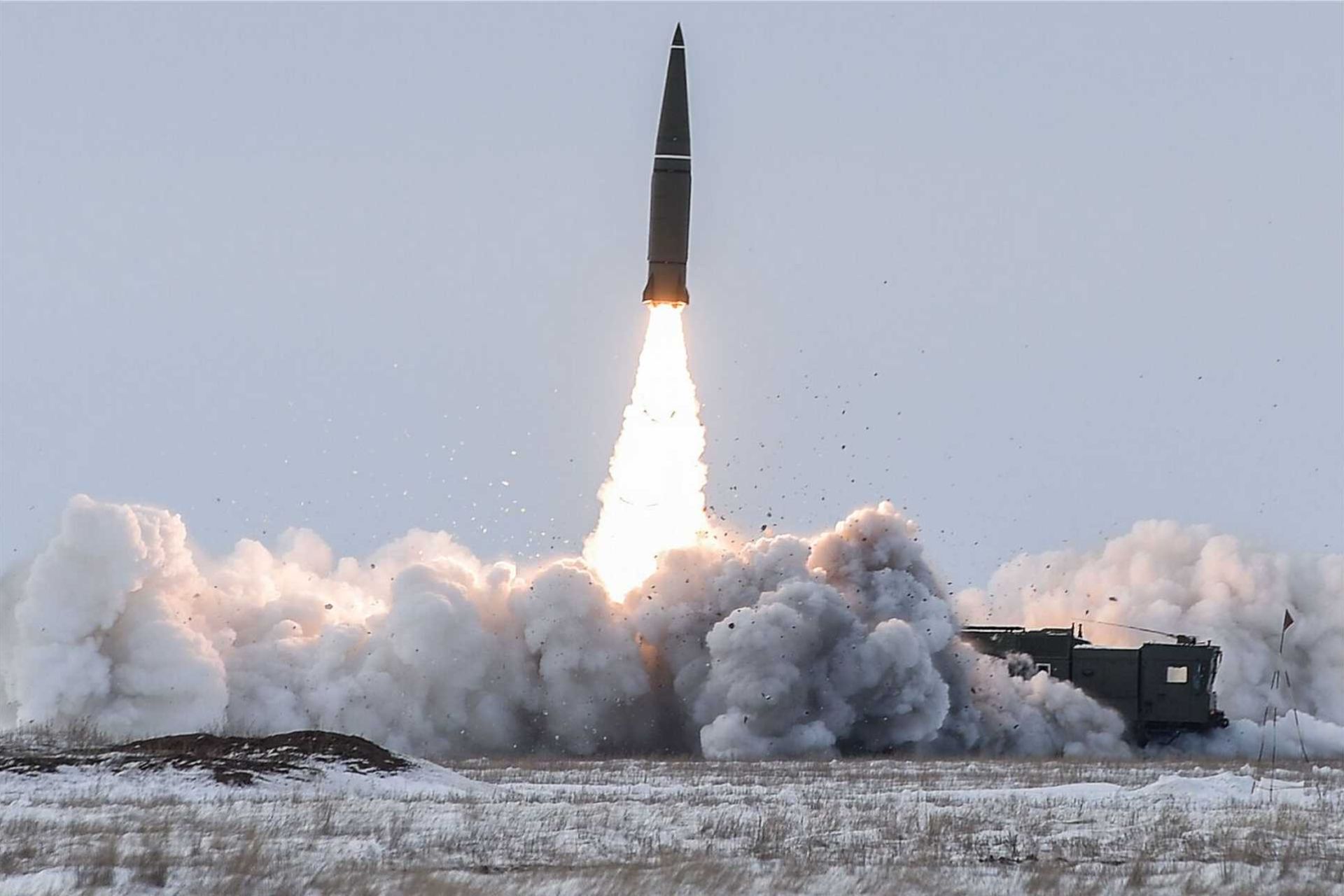Breaking News
Exclusive: Ukraine Intel Reveals Russia Can Produce 25 Medium-Range Ballistic Missiles Annually.
On December 4, 2024, the Main Intelligence Directorate of the Ministry of Defense of Ukraine provided an important update regarding Russia's missile production capabilities, particularly focusing on the RS-26 Rubezh, the country’s intermediate-range ballistic missile (IRBM). According to Ukrainian intelligence, Russia can now produce up to 25 units of RS-26 Rubezh each year, including its new Oreshnik variant. This new development highlights the growing production capacity of Russia's missile forces and their focus on strengthening their medium-range missile arsenals.
Follow Army Recognition on Google News at this link

Test fire at Kapustin Yar: Russia's RS-26 Rubezh and Oreshnik variants undergo critical testing at the Astrakhan region missile launch site, enhancing Russia's strategic missile capabilities. (Picture source: Russian MoD)
The RS-26 Rubezh, at the heart of Russia's modern missile capabilities, represents a strategic shift in Moscow's approach to missile warfare. Its production plays a significant role in Russia’s efforts to counter NATO's missile defense systems. The Oreshnik, a variant of the RS-26 Rubezh, has been shrouded in controversy, particularly following its use in an attack on Ukraine's Dnipro River on November 21, 2024.
The RS-26 Rubezh is a crucial missile for Russia’s defense strategy. Classified as an intermediate-range ballistic missile (IRBM), the RS-26 is designed to carry both nuclear and conventional warheads and has a range of approximately 3,500 to 4,000 km (2,175 to 2,485 miles). This puts it within the category of medium to long-range missile systems capable of striking targets across Europe, the Middle East, and parts of Asia.
Russia has invested heavily in producing the RS-26 Rubezh and its variants. The missile is manufactured at high output and can produce up to 25 units per year, a significant increase from earlier periods. This production surge follows the technical experience gained from Russia's previous RS-24 Yars ICBM (InterContinental Ballistic Missile) program, which has informed the development of the RS-26’s advanced features, including hypersonic speed and maneuverability designed to defeat modern missile defense systems.
The controversy surrounding Russia’s missile capabilities deepened after an attack on the Ukrainian city of Dnipro on November 21, 2024. During the attack, Russian forces used what they claimed to be a “new medium-range system” that President Vladimir Putin referred to as the Oreshnik. At the time, Ukrainian officials initially identified the missile used in the strike as an intercontinental ballistic missile (ICBM), but Putin contradicted this, announcing that the missile was a new addition to Russia’s missile arsenal, designed specifically for medium-range strikes.
In contrast, American officials labeled the missile as “experimental,” suggesting that while it may have been deployed operationally, the Oreshnik was still in an advanced testing phase. According to U.S. officials, the missile appears to be a non-nuclear, hypersonic ballistic missile, a designation that aligns with previous reports of its high-speed and maneuvering capabilities. These features make the missile extremely difficult to intercept, as it travels at speeds greater than Mach 5 (over six times the speed of sound) and can follow unpredictable flight paths to bypass missile defense systems. Despite these claims of a new missile type, the Oreshnik is widely regarded as a variant of the RS-26 Rubezh—with enhancements aimed at improving its hypersonic capabilities and range. The missile's inclusion in Russia’s operational arsenal is seen as part of a broader strategy to bolster its missile forces, specifically in response to NATO’s missile defense systems in Europe.
Both the RS-26 Rubezh and its Oreshnik variant undergo testing at Russia’s key missile testing sites. These include Kapustin Yar, located in the Astrakhan region, which has long been a central hub for developing and testing Russia’s missile systems, including the RS-26 and its variants. Additionally, the Plesetsk Cosmodrome in the Arkhangelsk region plays a critical role in missile testing. Though better known for space launches, Plesetsk is integral to Russia’s missile development and operational readiness.
The international community has responded with heightened concern over the deployment of the Oreshnik missile. The United States, in particular, has expressed its reservations, labeling the missile "experimental" and underscoring the potential escalation of tensions. The missile’s hypersonic nature and non-nuclear profile make it a versatile tool for Russia’s military, capable of striking with precision while circumventing most conventional missile defense systems, including THAAD and Aegis. The attack on Dnipro has further fueled worries that Russia may be advancing its missile technology with a focus on bypassing traditional defense mechanisms. With its ability to target high-value military and infrastructure assets over a long distance, the RS-26 Oreshnik represents a serious threat in a region already facing significant instability.
For NATO and the West, the growing production of intermediate-range ballistic missiles like the RS-26 Rubezh, and the operational readiness of the Oreshnik, highlight the urgent need to adapt and modernize missile defense capabilities to respond to Russia's evolving missile threats.
Russia’s ability to ramp up production of the RS-26 Rubezh, including its Oreshnik variant, signals a major shift in the strategic landscape. With up to 25 units of the RS-26 Rubezh and Oreshnik expected to roll out annually, Russia is significantly enhancing its missile arsenal, increasing its ability to project power over long distances. As the Oreshnik variant enters the operational phase, the growing concern about its hypersonic and maneuverability features will continue to shape global security dynamics. The missile’s potential to bypass missile defense systems, along with its strategic and tactical flexibility, makes it a formidable asset in Russia’s military planning.
For the West, this development calls for reevaluating defense strategies and missile deterrence capabilities as Russia’s missile forces continue to evolve rapidly. The geopolitical implications of this missile advancement will likely influence future arms control talks and shape the future trajectory of global missile defense systems.


























